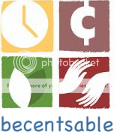It's true that you must be more open-minded in your shopping when you want to save with coupons. But - the more coupons you collect, the broader your selection options! So, here are our top suggestions for how to come by coupons.
1. Newspaper coupon ad inserts. You don't necessarily need to subscribe to your Sunday paper, either. If you are feeling particularly bold, you can ask local hotels or restaurants who offer the Sunday papers in their lobbies if they are already discarding these coupon inserts, and ask if you might be able to collect them instead. CVS carries the Sunday paper, as well. The Sunday Washington Post is $1.50, but if you keep an eye out for your local papers, they often carry coupons during the week for less - as in $0.25-$0.50 per paper! Local papers are also likely to carry the Red Plum/Valassis inserts that the Washington Post (and many other large national papers) no longer carry. The best part is that by buying your local papers, you are supporting and sustaining the circulations of these smaller publications - and probably ensuring your access to cheaper inserts in the future. Click here to read our post about finding your local newspapers, especially those that carry Red Plum/Valassis in additon to the SmartSource and Proctor & Gamble inserts.
2. Tearpads and Blinkies. These are found in convenience stores, drugstores, grocery stores, and big box (Wal-Mart, Target, etc.) stores. They are usually little Post-It style pads (tearpads), or a blinking coupon-dispensing machine. Taking these coupons does not obligate you to buy the item they discount on the spot; you can save them for later.
3. Doctors' offices. This is especially useful if you are a CVS-er. Check by the check-in/check-out desk for pamphlets, tearpads, and stacked coupons for medications and topical lotions (like Eucerin). The bonus with these coupons is that they usually have a longer period before they expire, usually 3-6 months longer than a standard newspaper ad insert coupon.
4. Send-in requests online. There are always a lot of these on the market. By supplying information, and often, signing up for newsletters or creating an account, you can access printable coupons, or send-in for a snail-mailed coupon (one or even a large packet). This is a great reason to rely on your own couponing email address, so you don't clog your usual email address with the byproducts of these sign-ups. Don't give your real name or phone number if you can get away with it - pseudonyms and 555-555-5555 will work just fine most of the time.
5. Send-in requests by snail mail. These often require pen, paper, and a stamp, because you are also sending in a receipt or UPCs proving that you already bought XX number or $XX worth of the brand. The good news is: for all of this work, you often get very large packets of coupons $10-$50 and up, in return.
6. Printables. As mentioned in #4, you sometimes are required to create an account to access printables, but there are many, many printable coupons out there which print freely. Afullcup.com's searchable coupon database is a great resource for searching out the links to printable coupons. Note: check with your stores before using printables, as policies vary. In our experience, CVS generally accepts IPs (Internet Printables), while Giant accepts all but "free item" IPs. We have both experienced inconsistent acceptance policies between our various Shopper's Food Warehouse and Bloom trips, so use IPs there at your risk. IPs usually print up to two per Windows-run computer. Please respect the assigned print limits, as stores become more reticent to accept IPs the more fraudulent coupons they receive (which manufacturers will often not reimburse).
7. Online-loadable coupons. Some grocery stores allow you to "tie" coupons to your account at the grocery store's website, and often this is allowed to be used with a hard-copy manufacturer coupon in person. Every month, upromise.com allows you to load coupons that 'deposit' into upromise accounts according to your grocery store customer savings card - not an instant savings, but better than nothing! Giant also has a similar function whereby the 'auto-scanners' you can pick up at the front of the store offer spontaneous savings, though there is no real way for this to be planned ahead of time - call these savings serendipitous.
8. Store coupons. These are non-manufacturer coupons, and can be found in the Sunday ads, generally, and in CVS, at the coupon-printing kiosk. The other main source of store coupons is Catalinas, discussed below. Store coupons can generally be used with manufacturer coupons (since the store takes the 'hit' on the store coupons and the manufacturer takes the 'hit' on the manufacturer coupons).
9. Catalinas/CRT coupons. Watch your receipts! Most stores now print coupons at the bottom of their receipts, or from a side machine. Sometimes these seem directly related to something you just purchased, and sometimes they seem random. They can be either manufacturer or store coupons, too, so keep your eyes peeled for them.
10. Item packaging. Open your packages carefully; often cardboard-boxed items have valuable coupons printed on the inside, and sometimes included information pamphlets include coupons good toward future purchases.
11. Peelies. These are included on the outside of the package as a peelable coupon (and often read, "Must be removed by cashier to receive discount.") It is considered bad couponing form to take a peelie without buying the item in the same trip, however, so consider peelies happy encounters when you do find them, and stock up on coupons for the item via other means.
1 week ago









No comments:
Post a Comment